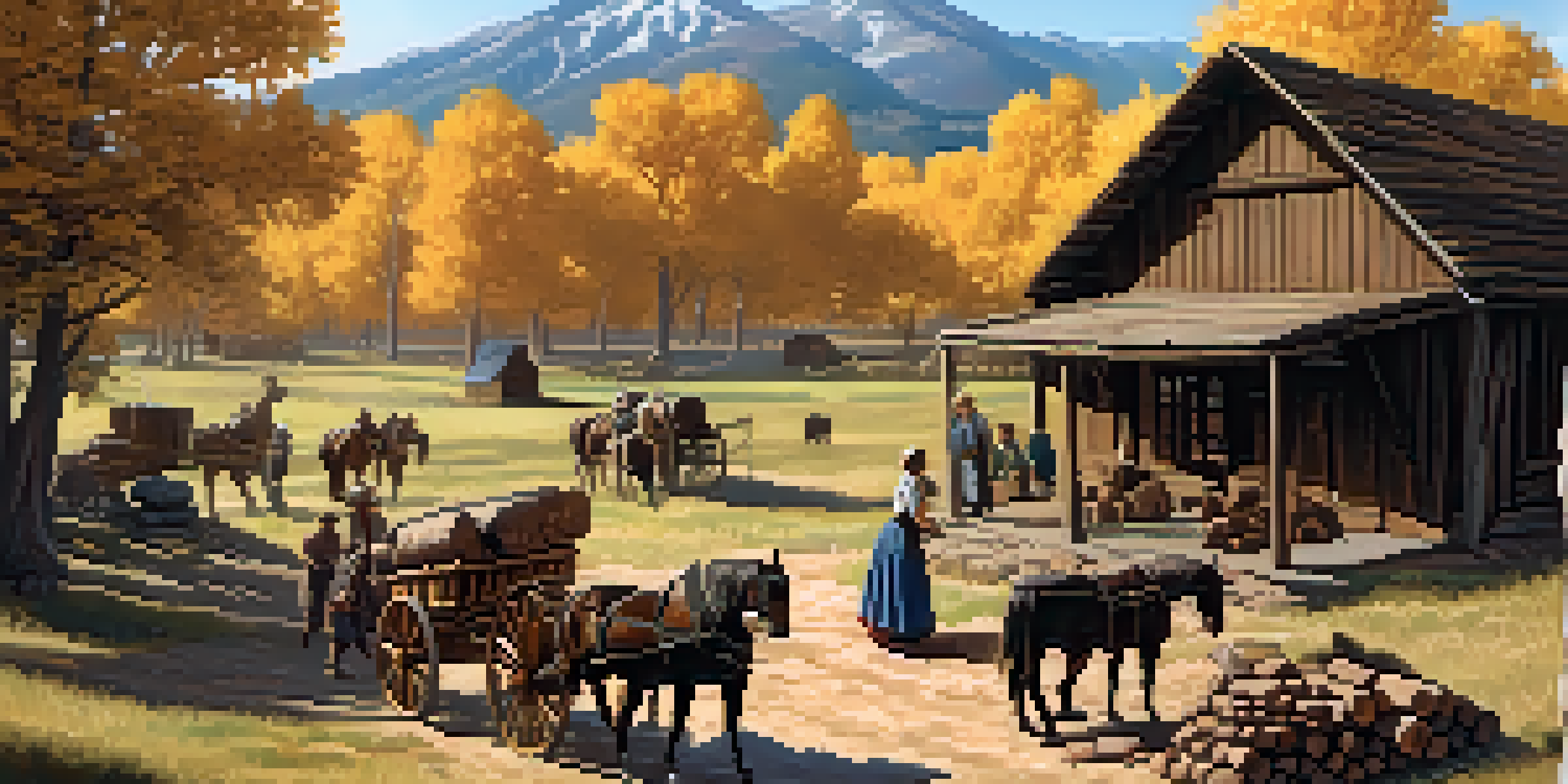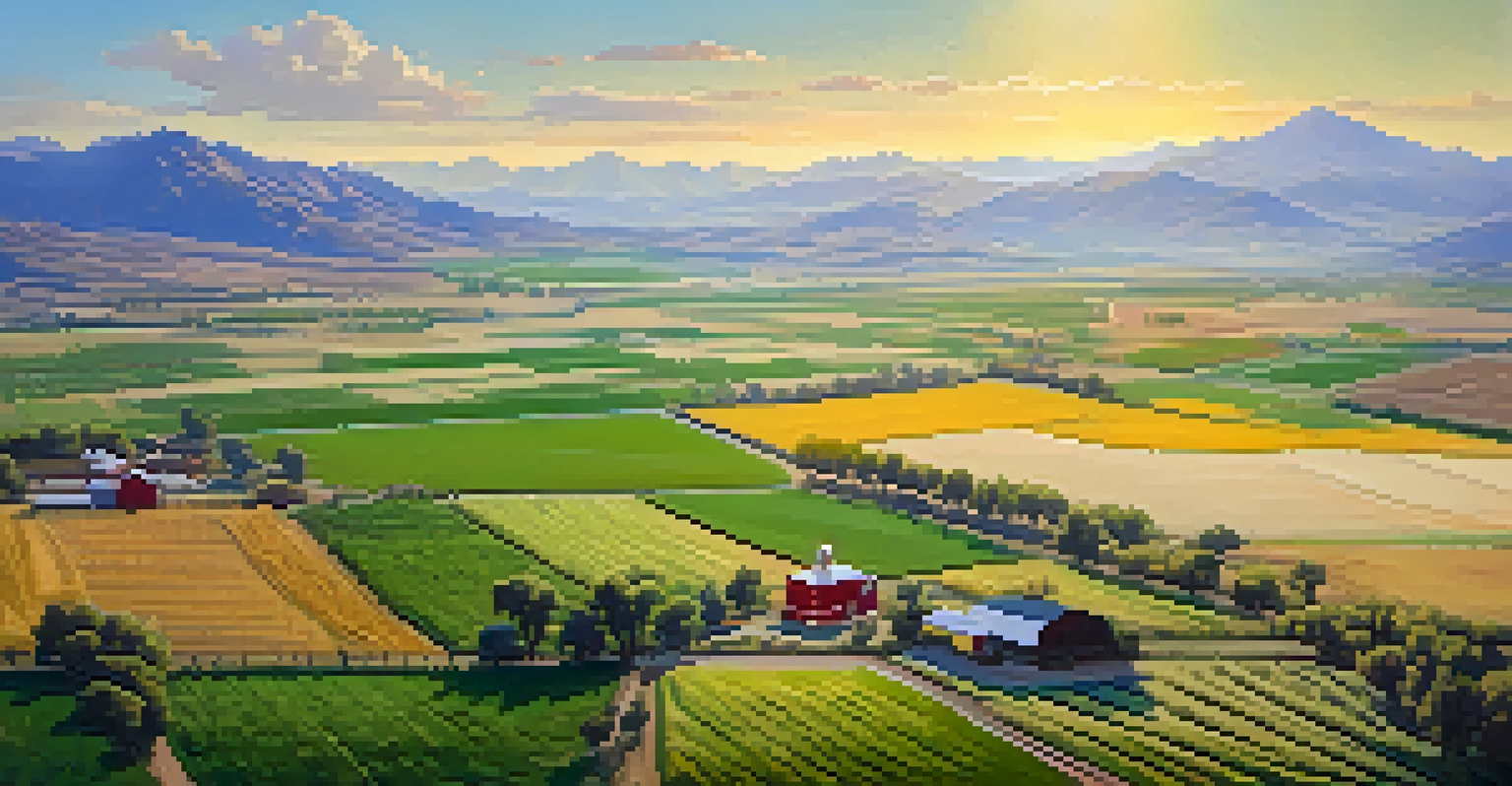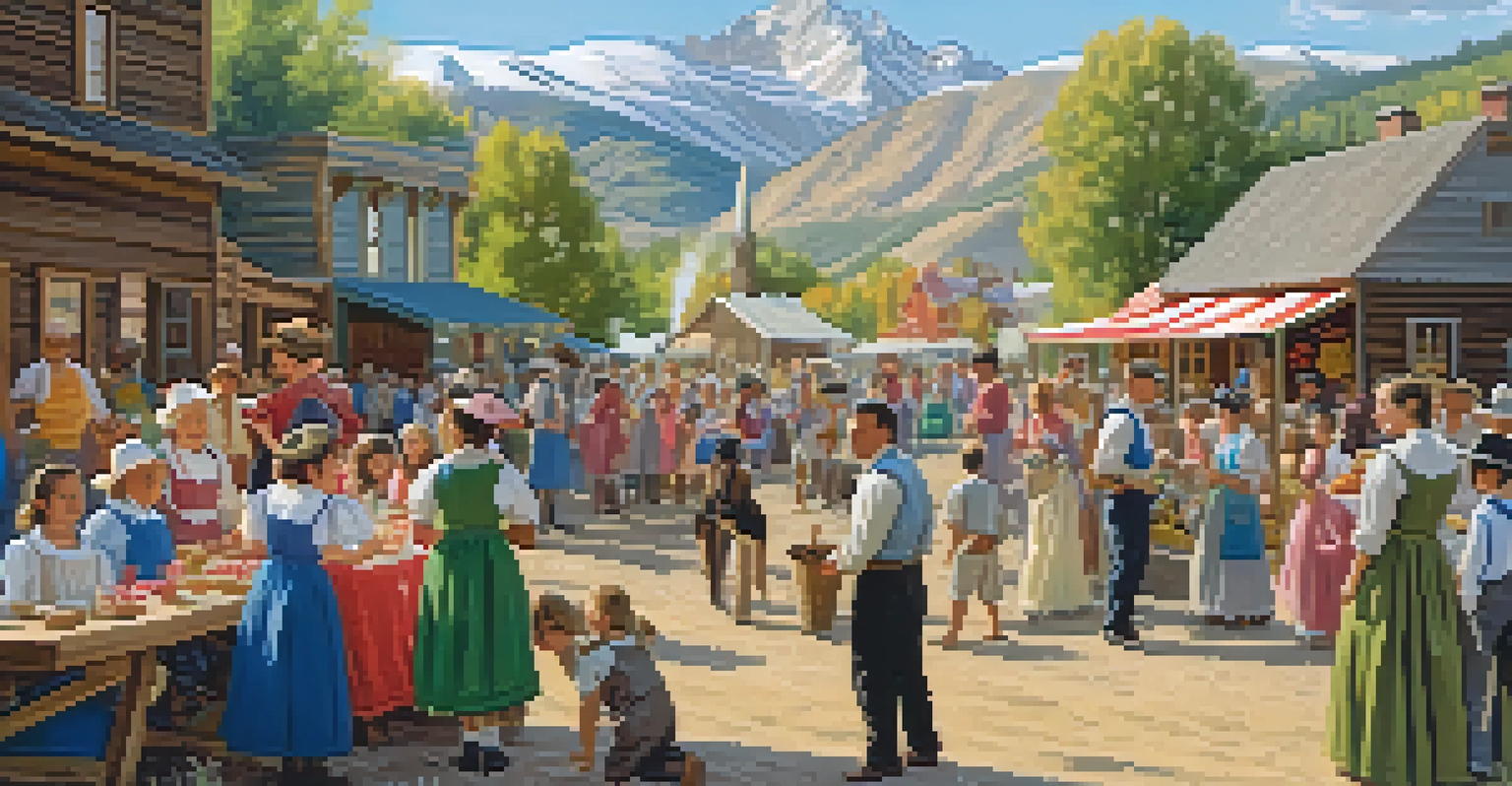Pioneer History: The Settlement and Growth of Utah Communities

The Early Days of Pioneer Settlement in Utah
The story of Utah's pioneer settlement begins in the mid-1800s, a time when the region was largely uncharted. Driven by the search for religious freedom and better opportunities, early settlers, particularly members of the Church of Jesus Christ of Latter-day Saints, ventured into this rugged terrain. They faced numerous challenges, including harsh weather, scarce resources, and the daunting task of building homes from the ground up.
The greatest glory in living lies not in never falling, but in rising every time we fall.
Upon arriving in the Salt Lake Valley, Brigham Young famously declared, 'This is the place.' This marked the beginning of a new chapter, as pioneers set to work cultivating the land, establishing farms, and laying down roots. The commitment to creating a thriving community was palpable, as families banded together to support one another in overcoming the challenges of frontier life.
These first settlements were more than just a means of survival; they represented hope and determination. The pioneering spirit fostered a sense of unity among the settlers, laying the groundwork for the vibrant communities that would follow. Each small victory, from planting the first crops to building the first schools, contributed to a burgeoning sense of belonging.
The Role of Agriculture in Community Growth
Agriculture played a crucial role in the growth of Utah communities, serving as the backbone of the economy. The fertile soil of the Salt Lake Valley proved to be a blessing, enabling settlers to cultivate crops that would sustain their families and support the local economy. Wheat, corn, and barley became staples, while orchards flourished, providing fresh fruits to the growing population.

As farming techniques evolved, so did the communities. Irrigation systems were developed to optimize water usage from the nearby mountains, allowing settlers to expand their agricultural endeavors. This innovation not only increased crop yields but also attracted more settlers who sought the promise of prosperity through farming.
Pioneers Built Resilient Communities
Utah's early settlers overcame harsh conditions and adversity through cooperation and support, fostering a strong sense of community.
The success of agriculture in Utah didn't just feed families; it fostered a strong sense of community. Farmers came together to share knowledge and resources, forming cooperative ventures that benefited all. This collaborative spirit was instrumental in establishing a thriving social fabric, linking neighbors through shared goals and mutual support.
Transportation: Linking Communities Across Utah
With the establishment of settlements came the need for transportation. Initially, dirt trails and wagon roads connected the emerging communities, allowing for trade and social interaction. However, as populations grew, the demand for more efficient transportation solutions became clear. This led to the development of roads and eventually railroads that would revolutionize travel and commerce in the region.
The future belongs to those who believe in the beauty of their dreams.
The completion of the Transcontinental Railroad in 1869 was a game-changer for Utah. It not only linked the East and West but also facilitated the movement of goods and people in and out of the state. The railroad opened new markets for local farmers and businesses, providing a much-needed boost to the economy and encouraging even more settlers to relocate to Utah.
As transportation improved, so did the interconnectivity of Utah communities. Families could visit relatives in neighboring towns, and local merchants could sell their wares far and wide. This increased mobility fostered a sense of shared identity among the diverse populations, solidifying the bonds that would weave into the rich cultural tapestry of Utah.
Cultural Development and Community Identity
As Utah's pioneer communities grew, so too did their cultural identity. The settlers brought with them various traditions, beliefs, and practices that melded into a unique Utah culture. Festivals, religious gatherings, and community events became central to life, providing opportunities for people to come together, celebrate their achievements, and strengthen bonds.
Education played a vital role in shaping this cultural development. Schools were established early on, emphasizing not just academic knowledge but also moral values and community responsibility. As children learned about their heritage, they carried forward the pioneering spirit, ensuring that the community's values and traditions would thrive in future generations.
Agriculture Fueled Economic Growth
The fertile Salt Lake Valley enabled successful farming, which not only sustained families but also attracted more settlers to the region.
Art and music also flourished, reflecting the diverse backgrounds of the settlers. Local artists and musicians found inspiration in the stunning landscapes and stories of resilience. This cultural richness not only enhanced community pride but also attracted visitors eager to experience the vibrant life of Utah's pioneer descendants.
Challenges and Resilience of Pioneer Communities
While the story of Utah's pioneers is one of hope and growth, it was also marked by significant challenges. Harsh winters, droughts, and locust invasions threatened crops and livelihoods. Each setback tested the resolve of the settlers, but their resilience shone through as they rallied together to overcome adversity.
Community support was key during tough times. Neighbors would share resources, help each other rebuild after a disaster, or come together to provide assistance during difficult harvests. This collective effort nurtured a deep sense of camaraderie, reinforcing the idea that they were in this journey together.
The struggles faced by these communities ultimately shaped their character. Overcoming obstacles strengthened their bonds and fostered a spirit of innovation. From developing new farming techniques to creating cooperative societies, pioneers learned to adapt, ensuring the survival and growth of their communities for generations to come.
The Impact of Religion on Community Life
Religion played a pivotal role in the lives of Utah's pioneers, influencing everything from daily routines to community governance. The settlers, many of whom were members of the Church of Jesus Christ of Latter-day Saints, viewed their journey as a divine mission. This strong religious foundation not only guided their moral compass but also fostered a supportive network among settlers.
Church gatherings became central to community life, providing a space for worship, socializing, and decision-making. These gatherings helped to cultivate a sense of belonging and shared purpose, as families came together to celebrate milestones and support one another through challenges. The church also played a significant role in education and health care, establishing schools and clinics that served the community.
Cultural Identity Shaped by Diversity
The blending of various traditions and beliefs among settlers enriched Utah's cultural landscape, creating a unique community identity.
As the population grew and diversified, religious tolerance became increasingly important. While the early settlers shared a common faith, subsequent waves of immigrants brought various beliefs and practices. This blending of traditions enriched the cultural landscape of Utah, allowing for a more inclusive community that celebrated diversity while retaining its core values.
Legacy: The Evolution of Utah Communities Today
The legacy of Utah's pioneering days is still evident in the state's communities today. The foundations laid by those early settlers in agriculture, cooperation, and cultural identity continue to influence modern Utah. Many towns still celebrate their pioneer roots through annual festivals, reenactments, and educational programs that honor the struggles and triumphs of their ancestors.
Moreover, the spirit of innovation that characterized pioneer life persists in contemporary Utah. The state has developed into a hub for technology and entrepreneurship, blending its rich history with modern advancements. The pioneering ethos of resilience and community collaboration remains strong, driving progress and fostering growth.

As Utah continues to evolve, the lessons learned from its pioneers serve as a reminder of the importance of community. The bonds forged in the face of adversity laid the groundwork for a vibrant, diverse state that embraces both its history and its future. Today, Utah stands as a testament to the enduring legacy of those who first settled its lands.